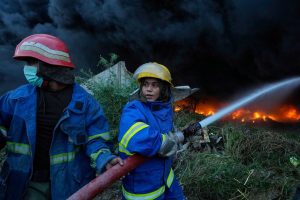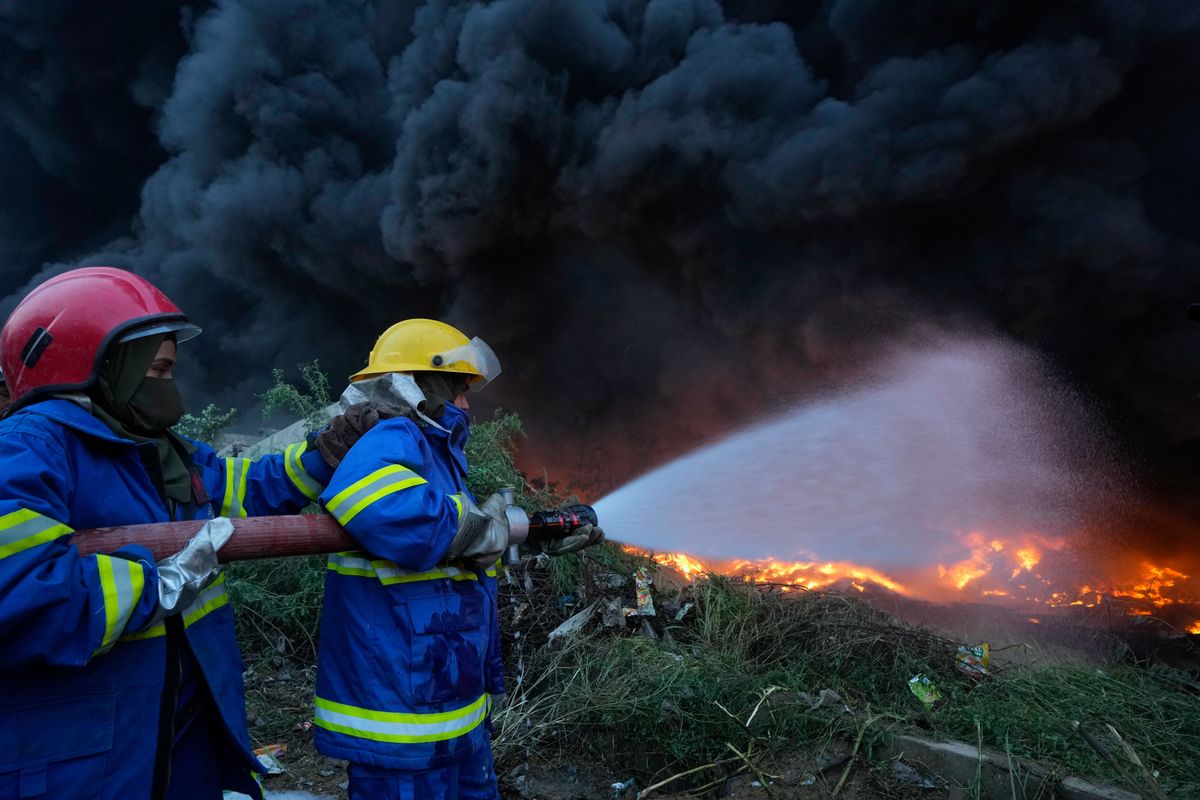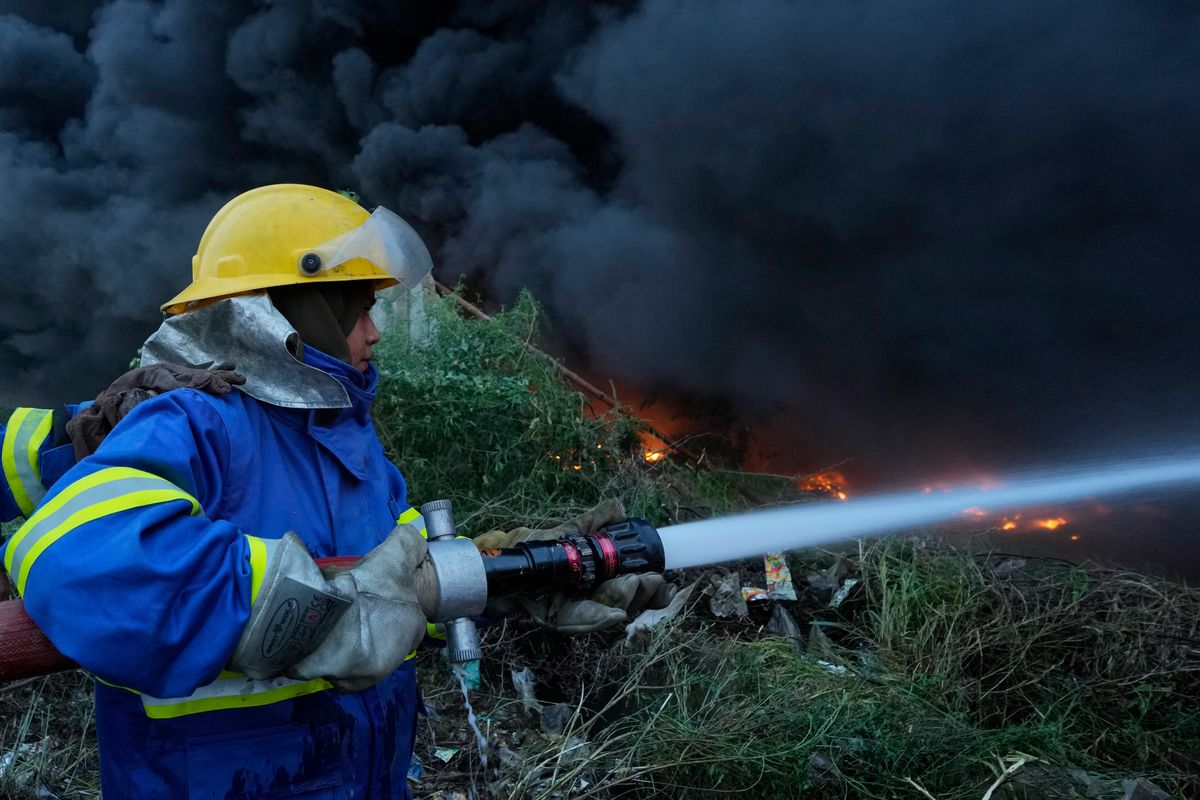KARACHI, Pakistan (AP) — Thick black smoke clawed at the sky last week over the industrial zone in Pakistan’s largest city as firefighter Syeda Masooma Zaidi raced toward the raging blaze in Karachi.
The storage facility was packed with truck and car tires, and the flames leapt hungrily, black plumes twisting skyward. Heat shimmered off the asphalt, turning the air heavy and acrid, stinging her eyes and lungs.
Zaidi did not hesitate amid the deafening roar, hose in hand, her helmet strapped tight.
The 23-year-old and the rest of her firefighting team — all men — aimed the jets of water at the molten rubber, which hissed and steamed under the torrent. The team worked methodically, every movement precise, every second critical.
Hours later, the blaze was under control. Nearby factories were spared, no lives were lost — though the damage ran into tens of thousands of dollars (millions of Pakistani rupees).
When the firefighters emerged from the smoke, their faces streaked with soot, dozens of onlookers cheered behind safety lines.
Zaidi is a rare sight in a country where women firefighters were mostly unheard-of until 2024. Her career — like those of other women in Pakistan’s emergency services — underscores the gradual inroads being made in the staunchly patriarchal and traditional Islamic nation.
Some were inspired when Shazia Perveen became Pakistan’s very first woman firefighter in 2010 in eastern Punjab province, where she is now a trainer. In Sindh province, where Karachi is the capital, women started joining firefighting services in 2024 after getting their training in Punjab.
And though they still make up less than 1% of Pakistan’s firefighters, authorities say more women are likely to join firefighting units in the coming years in the country of 255 million.
Most Pakistani women who go into professional fields choose careers as doctors, engineers or teachers, Zaidi said. She wanted to show that “we can do this too.”
Her chief fire officer, Humayun Khan, has praised Zaidi and her female colleagues.
Dr. Abid Jalaluddin Shaikh, chief of the Sindh Emergency Service, said Zaidi is one of 50 women firefighters in the province. Another 180 are in training as rescue divers, ambulance medics and emergency responders.
“The focus is no longer on breaking taboos,” he said. “Now we see real results.”
Zaidi graduated from the Punjab Rescue Service Academy, where she mastered high-angle rescues that use ladders, ropes and trolleys and typically involve victims trapped in skyscrapers, industrial towers or other high elevations, as well as various types of fire and water emergencies.
Still, she says she feels many doubt her ability on the job.
“When we arrive, people say, ‘She’s a girl — how can she rescue anyone?’” she said. “Every time we save a life, we prove that women can also do this job.”
Zaidi’s fellow firefighter Areeba Taj, also 23, recalled missions in Karachi where she and her female colleagues helped save lives amid chaos and smoke. Their supervisor, Ayesha Farooq, highlighted the unique strengths women bring, especially when victims include women and children.
“By joining rescue services, they earn respect — for themselves, and for the country,” Farooq said.
Zaidi, who grew up with seven brothers and one sister, says her motivation was simple: courage, duty, and faith.
“People still doubt us,” she said. “But every time we go out there, we keep proving them wrong.”
As the skyline above the Karachi industrial zone cleared last week, Zaidi returned with her team to the fire station, ready for the next alarm.
Every day on the job, Zaidi, Taj and their other female colleagues prove that gender is no barrier to bravery.
___
Ahmed reported from Islamabad. Associated Press writers Abdul Sattar in Quetta, Babar Dogar in Lahore and Riaz Khan in Peshawar, Pakistan, contributed to this report.
By MUHAMMAD FAROOQ and MUNIR AHMED
Associated Press





